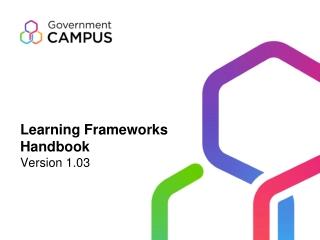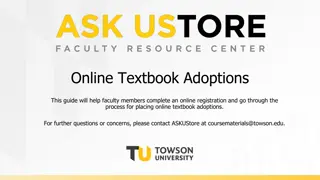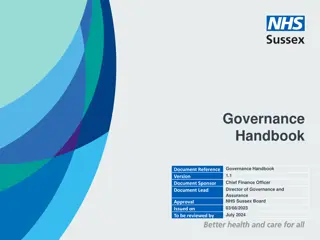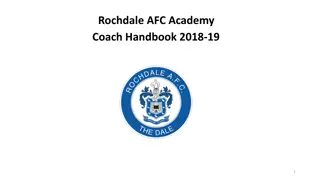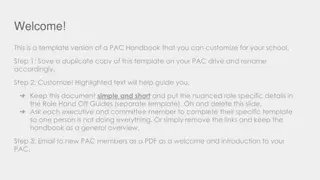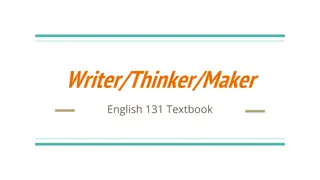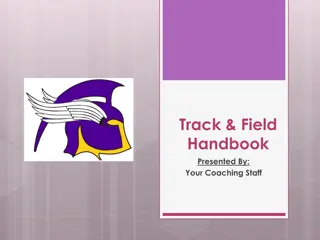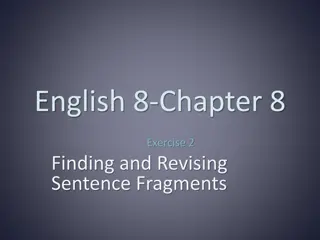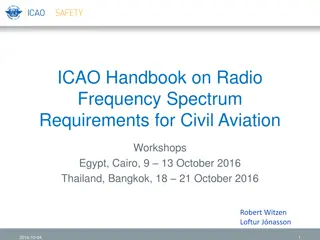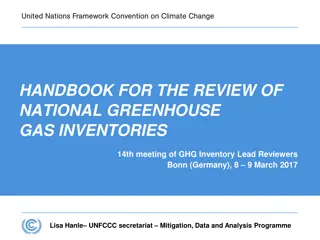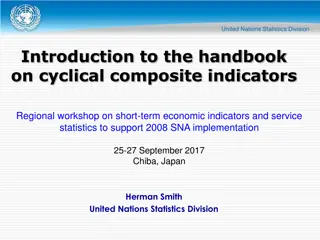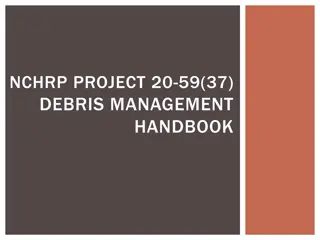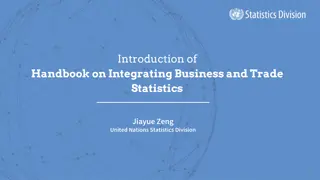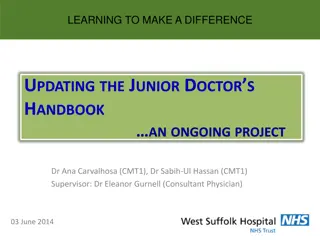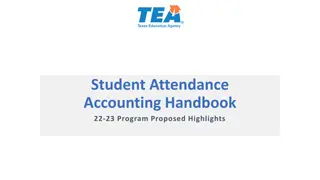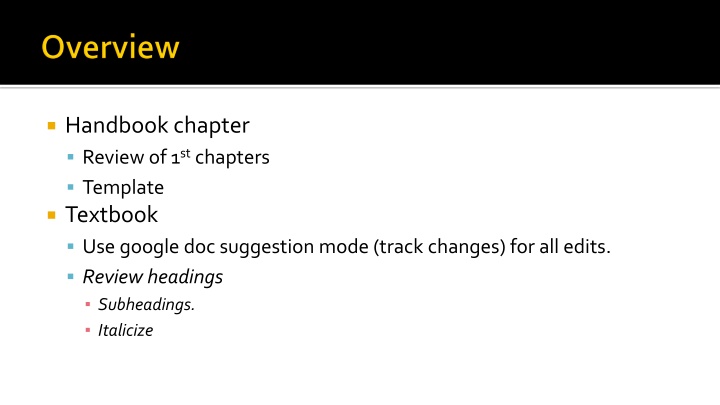
Comprehensive Review of Systematic Summary on Developmental Tasks in Parenthood Transition
This review analyzes the systematic summary of Chapter 11, focusing on multiple studies and issues related to the developmental tasks of adults in transitioning to parenthood. It highlights key aspects such as differences between mothers and fathers in interactions with infants, effects of prenatal and infancy experiences, theories of attachment, and factors influencing secure attachment. The review also addresses areas of improvement for better comprehension of the original chapter content.
Download Presentation

Please find below an Image/Link to download the presentation.
The content on the website is provided AS IS for your information and personal use only. It may not be sold, licensed, or shared on other websites without obtaining consent from the author. If you encounter any issues during the download, it is possible that the publisher has removed the file from their server.
You are allowed to download the files provided on this website for personal or commercial use, subject to the condition that they are used lawfully. All files are the property of their respective owners.
The content on the website is provided AS IS for your information and personal use only. It may not be sold, licensed, or shared on other websites without obtaining consent from the author.
E N D
Presentation Transcript
Handbook chapter Review of 1stchapters Template Textbook Use google doc suggestion mode (track changes) for all edits. Review headings Subheadings. Italicize
Cite citations in your text but there is no need for references. Submit the assignment in word. Chapter number and title.
11. Systematic summary. Multiple studies and issues and results. Comprehensive sense of chapter as a whole and details. 10. Small number of errors that do not affect comprehensibility. Errors are typically in word choice or sentence structure. No author or title of article cited. Page number not indicated when quoting. Alternately, there may be unresolved questions, or areas not covered in the summary. less importantly, the evidence cited may not be the strongest evidence in the chapter. 9. At times, grammatical errors and impreciseness make it hard to understand what original chapter indicated. Sense of concrete discourse with examples for concepts is sometimes missing. Small confusions with scientific method: prove that vs. test whether. Occasional sentences whose meaning is unclear. Adequate details are not provided-- eg key parts of the chapter are described only briefly. 8. Frequently, grammatical errors and impreciseness make it hard to understand what original chapter indicated. Sense of concrete discourse with examples for concepts is often missing. Confusions with scientific method: prove that vs. test whether occur regularly. Frequent sentences whose meaning is unclear. 7. Imprecise writing and errors make it difficult to know what was stated in the chapter.
CHAPTER 11 CHAPTER 9 CHAPTER OUTLINE AND OVERVIEW 1st choice CHAPTER OUTLINE AND OVERVIEW 1st choice What are the developmental tasks of adults in the transition to parenthood? How do mothers and fathers differ in time spent with, and quality of interaction with, infants? Julian Transition to Parenthood How can we understand the long-term effects of prenatal and infancy experiences? Is it possible to overcome early risk factors? Is infancy an important period of the life course even if we do not have an autobiographical memory of that time? Hana Development as a Complex Dynamic Process The Formation of Attachments What are the main theories of attachment? How are individual differences in attachment assessed? What are the disorders of attachment? What are the predictors of secure attachment? Can infants form attachments to people other than the mother? Are there cultural differences in attachment? Ahjine Does any particular factor have more influence over later outcomes than another? Are infant factors more important than parental contributions, or vice- versa? Aiden The Effects of Infant and Parental Factors Hannah Guidance and Discipline What is guided participation and proactive parenting? What are the different styles of disciplining infants? Kim (not 1st choice) Nutrition What is the best diet and exercise program for pregnant women? Is it better to breast- feed or to bottle-feed babies? What are the nutritional requirements of infants? How should solid foods be introduced? When can infants be expected to feed themselves? What are the types of risk factors in infancy? What are the long-term effects of these risks? Veronic a The Effects of Risk and Disadvantage Safety and Health What are the main threats to infant health and safety? What are some methods of responding to emergencies? What kinds of immunizations are recommended for infants? How can risk be alleviated? What types of programs work best for infants and parents at risk? Kate The Effects of Intervention and Education Programs
Suggestion mode 12 places where you indicate as a comment Citation needed Out of date or inappropriate Is this correct? You are commenting on the text with the additional citations summaries already contained in the margins Saying citation needed when a citation (and a summary) is already in the chapter is not adequate You will need to know your section including material in the margins through and through MUST COVER WHOLE SECTION
Citations should be 2013-2022 More recent is typically better Find citations in google scholar Citations must be to peer-reviewed journal articles reporting an empirical study Ie. It must have a methods section 1 in 6 citations can be to a literature review in a peer-reviewed journal Generally, the more prestigious the journal the better Exceptions, egsafety. Ask! KNOW THE POWERPOINT ARTICLES FROM THIS CLASS THAT ADDRESS YOUR SECTION TOPIC.
Step 1: Go to the chapter you are working on and see which articles need updating. I may leave comments indicating articles that need updating. Citations that need updating are typically older. Or there may be new literature which is particularly important. Step 2: Make sure you have thoroughly read the chapter leading up to the citation you are updating. Make sure to familiarize yourself with the topic being discussed in the paragraph of the citation you are updating. Step 3: Once you have read up to the citation and are familiar with the topic in the paragraph, go to google scholar or ouruniversity library website and type in a phrase that summarizes the general idea of the article and the paragraph. If you do find an article on google scholar that seems worthy of being added as a citation but you are unable to access it, copy and paste the title of the article into our library website search engine and you should be able to find the article. Remember, if we are searching for new citations we are looking for current and up to date research. Articles must be published after 2012. The articles you find should also be peer reviewed in established journals. Step 4: After you find a fitting article, go back to your word document for the chapter. Step 5: Construct an in-text citation for the article and add it to the comments. Make sure the comment highlights the sentence(s) the new citation pertains to. Step 6: After you have added all of your edits, remember to link the pdf file of your article to the in-text citation you created. If you are unsure on how to do this refer to How to Link a Citation .
Linking Citations Step 1: Go to your chapter and see which citations don t have links. Step 2: Once you choose your citation, use the References document (References.Topical) to find it and decide whether it s from an article or a chapter. An example of an article citation would be: Papousek, M. (1989). Determinants of responsiveness to infant vocal expression of emotional state. Infant Behavior and Development, 12, 507 524. An example of a chapter citation would be: Papousek, H., & Papousek, M. (1987). Intuitive parenting: A dialectic counterpart of the infant s integrative competence. In J. D. Osofsky (Ed.), Handbook of infant development (2nd ed., pp. 302 331). New York: Wiley. Once you ve found your article or chapter, then you can use that citation to find the link. Step 3: In order to link your article to the citation, you will have to search a database for the PDF link. Your first search engine should be the UM library website. If you are unable to find it on the UM website, then Google Scholar should be your next option. If you cannot find it on either database, move on to linking your next citation. Step 4: Once you can access the full version of your article and have the link, copy it. Step 5: Go back to the Google Doc with your chapter and highlight your citation with your cursor. Step 6: Once you ve selected your citation, click on the Insert tab on the top left. Step 7: Scroll down to Link and select that option. Step 8: Paste the link that you copied into the box. Step 9: Click Apply to link your citation.
Copy your approved reference to the list of references using suggest edits in google docs. Just the reference, not the abstract. Rewrite your summaries based on my feedback. Summaries must be: Substantive and accurate Not use phrasing such as, the article said Ready for insertion in the textbook at a specific point you indicate. You may summarize additional articles that have not been summarized that are in the textbook margins. Follow all the points above including copying the reference.
3-4 sentence summary of the article results (eg results section) Longer for better citations We need to know what they did and found. Must cite article with a citation that is linked to url (egMattson, et al 2013) If you do not think a citation deserves a summary, you may summarize an article that has been proposed by another person (but not your current classmates) in the comments as long as it has not previously been summarize in the comments or main text of the chapter. Your summary with the citation and full reference (eg Mattson, W. I., Cohn, J. F., Mahoor, M. H., Gangi, D. N., & Messinger, D. S. (2013). Darwin s Duchenne: Eye constriction during infant joy and distress. PLOS ONE, 8(11). doi: 10.1371/journal.pone.0080161) should exist in the comments of the chapter (using the original comment box where you put the citation and summary if possible) Order: Reference, Summary, Abstract in one box if possible Your summary with the citation and full reference should also be submitted separately as a word document in this format: Summary with citation followed by full reference
A word document with your summaries that cites the article (and contains a urllink) and your references (standard format) must be submitted using safeassignon blackboard. They also need to be inserted in the google doc as usual. Chapter 9: https://docs.google.com/document/d/1bzMEeye1XGRvx2YGGbc8ZzTc0OdlS3oC/edit Chapter 11: https://docs.google.com/document/d/1lPn86aa38n9lmTzf_fVGAsfo8jYwOdle/edit

![textbook$ Wallbanger (The Cocktail Series Book 1) [KINDLE EBOOK EPUB]](/thumb/9895/textbook-wallbanger-the-cocktail-series-book-1-kindle-ebook-epub.jpg)

